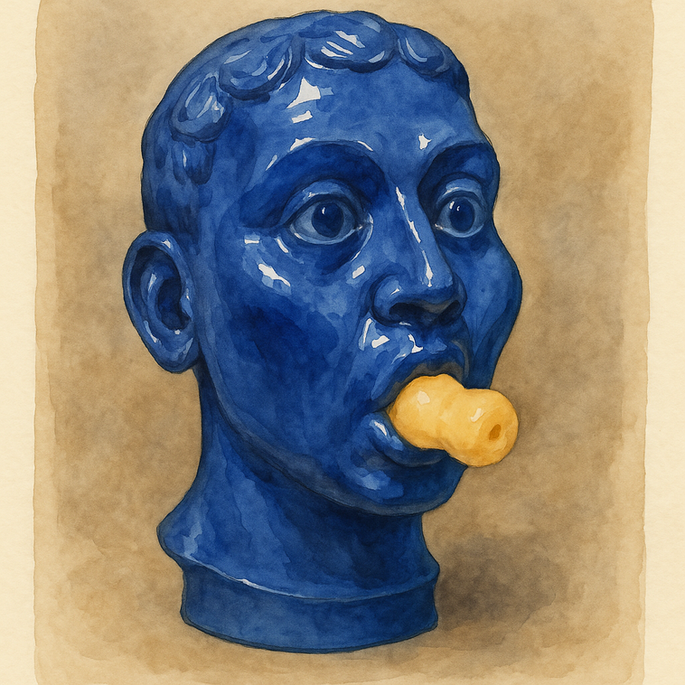top of page

MY FIRST NFTs
My First NFTs
In 2014, I began a series of watercolors depicting invented busts: solitary, off-centered, sometimes grotesque faces floating on paper as if excavated from an ancient memory or a disrupted archive. I didn’t know it at the time, but those images were, in a way, premonitions.
That same year, I encountered—almost by accident—one of the earliest online discussions about what would later be called NFTs. It was in a cryptography forum, where people debated the possibility of creating unique digital objects through blockchain. I arrived there while researching decentralized systems for the circulation of art. It was a technical, marginal read—but for me it was revealing: if digital images could become unique, what would happen to the artwork’s aura?
In 2016, I translated those watercolor faces into 3D models. Originally conceived as fragile, intimate pieces, they began to take physical form as resin sculptures with glossy, synthetic surfaces. This shift from watercolor to industrial matter exposed a crucial tension: the sensory and the artificial, the unrepeatable and the endlessly replicable.
By 2020, I animated these busts digitally—gave them breath, color shifts, silent gestures. They became avatars, speculative sculptures suspended in virtual space. Without planning it from the start, the series unfolded across painting, sculpture, animation, and cryptography.
Engaging with Walter Benjamin’s question of aura, I didn’t just ask what we lose when aura disappears—but also what we gain when it is artificially produced. These are not just NFTs. They are portraits of the contemporary aura: fabricated, fluid, unstable—a presence circulating through code, yet rooted in materiality, human error, and the touch of watercolor.
In a world saturated with images, digital property, and planned obsolescence, I chose to return to the face. And instead of doing it through pure technology, I did it through an obsolete technique: painting with water.
bottom of page







